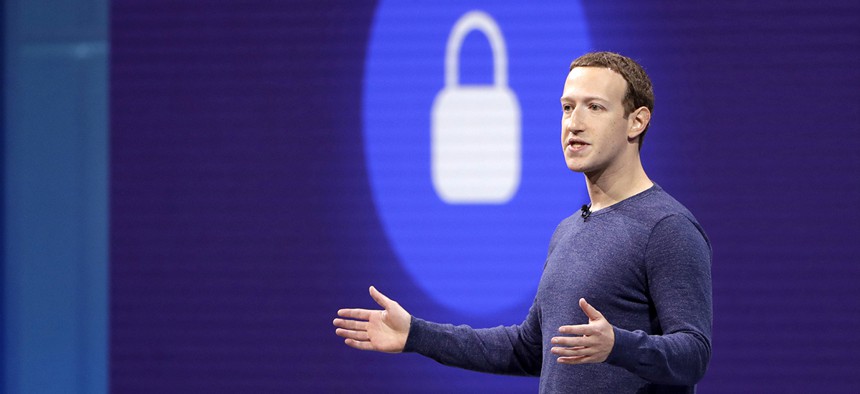Here’s How Facebook Plans to Take Over The Workplace

Facebook CEO Mark Zuckerberg Marcio Jose Sanchez/AP
Another way to manage office communications.
Companies are encouraging their employees to go on Facebook at work.
Workplace, Facebook’s two-year-old office-communications system, now has more than 30,000 paying customers and, as of Tuesday, a host of new features to help it compete with Microsoft Teams and Slack.
But why would any employer want to use Facebook—a company plagued with a series of data breaches and the source of an endless feed of potential distractions—to manage their office communications?
The answer, according to Workplace’s VP Julien Codorniou, is that Workplace is a completely different product than Facebook’s flagship app. “Workplace is like a software-as-a-service startup within Facebook,” he says. “But it’s still completely aligned with Facebook’s mission. “
Codorniou doesn’t see any contradiction in his claim. Though both products are designed to “connect people and build meaningful communities,” they are separate applications with separate business models. Workplace is a subscription service that is sold to businesses for $3 per employee per month. Facebook, well, runs ads, Senator.
“It’s not social media with a corporate wrapper,” says Joe Park, Walmart’s VP of workplace technology. “The ability for us to roll [Workplace] out at scale has helped us bridge the generational gap among our employees.”
Many of Walmart’s 2.3 million employees are likely familiar with how Facebook works. So adding a new workplace collaboration tool that shares many of Facebook’s features—like groups, Facebook Live, and newsfeed—causes less friction than adding a new software tool from scratch.
At Facebook’s inaugural enterprise conference yesterday, the company released a number of new Workplace features including the ability to set up communications channels between organizations and a “do not disturb” mode that lets employees turn off notifications from their colleagues.
Similar features have already been rolled out by competitors like Slack, which has more than 70,000 paying teams and was recently valued at more than $7 billion. But given Facebook’s resources and its existing relationships with a number of large employers from its advertising business, Slack may want to watch its back.
NEXT STORY: FCW Insider: Oct. 11


